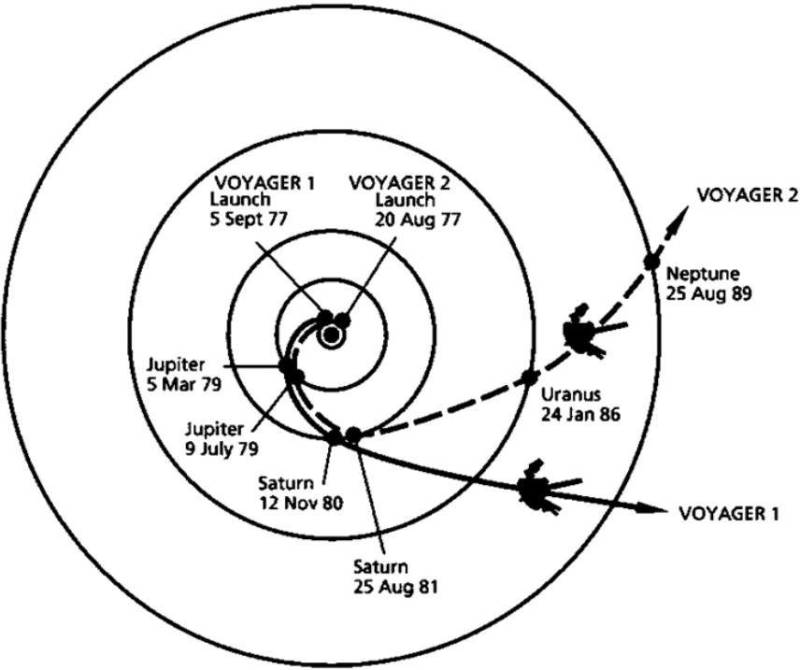VOYAGER 2 EXPLORES OUTER SOLAR SYSTEM AND BEYOND
Why in the news?
Voyager 2, launched in 1977, continues transmitting data from interstellar space, revealing valuable insights into the solar system’s boundary, decades after its historic flybys of Uranus and Neptune.
source:scribd
Historic Journey and Planetary Discoveries:
- Launched on August 20, 1977, Voyager 2 was tasked with exploring the outer planets: Jupiter, Saturn, Uranus, and Neptune.
- Only spacecraft to have visited Uranus and Neptune, where it discovered 10 new moons and two rings at Uranus and five moons and four rings at Neptune.
- Captured iconic images of the “Great Dark Spot” on Neptune and identified Jupiter’s 14th moon, showcasing its capability for significant astronomical discoveries.
The Golden Record and Interstellar Mission:
- Voyager 2 carries a Golden Record with Earth’s sounds and images as a message for potential extraterrestrial civilizations.
- After completing its primary mission, Voyager 2 began its interstellar journey, reaching beyond the planets and entering interstellar space on December 10, 2018.
- Joined its twin, Voyager 1, as one of the only human-made objects in interstellar space, transmitting data on the heliosphere and interstellar medium.
Continuing Legacy and Scientific Contributions:
- Nearly four decades later, Voyager 2 remains operational, providing valuable insights into the solar system’s boundary and interstellar space
- It stands as the second most distant human-made object from Earth after Voyager 1, continuing to inspire with its ongoing exploration.
- Voyager 2’s journey underscores humanity’s enduring curiosity and commitment to uncovering the cosmos, symbolising the potential of scientific exploration
Interstellar Space: Key Points
- The region between stars in a galaxy.
- Composed of various elements such as neutrinos, charged particles, atoms, and molecules.
- Contains dark matter, which is invisible and undetectable by conventional means.
- Filled with photons, the fundamental particles of light.
- An essential part of the galaxy’s structure, influencing cosmic processes.




